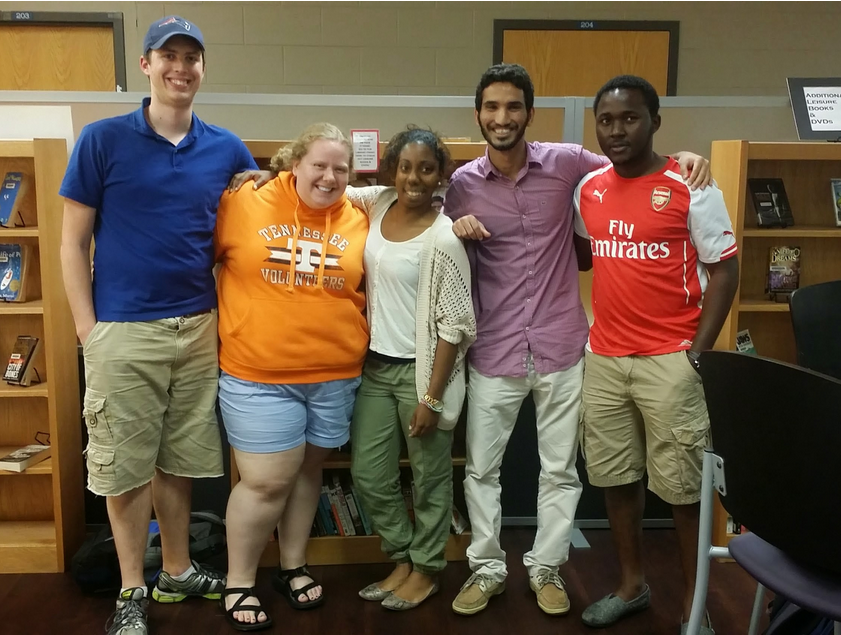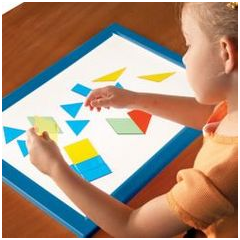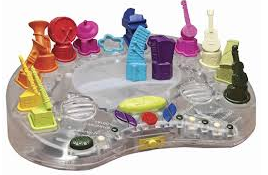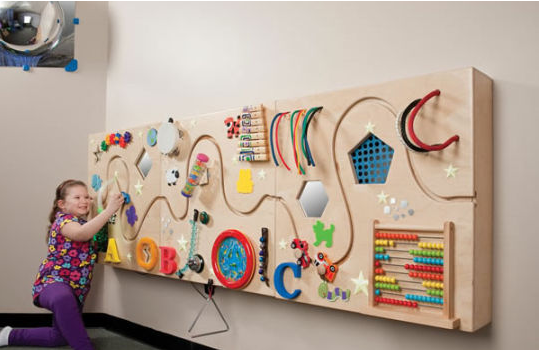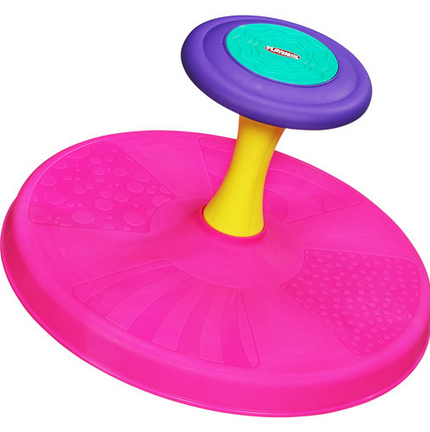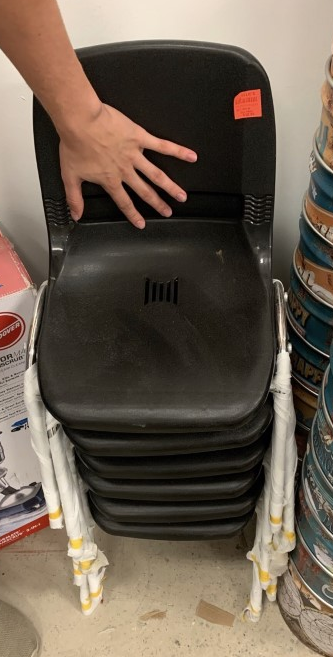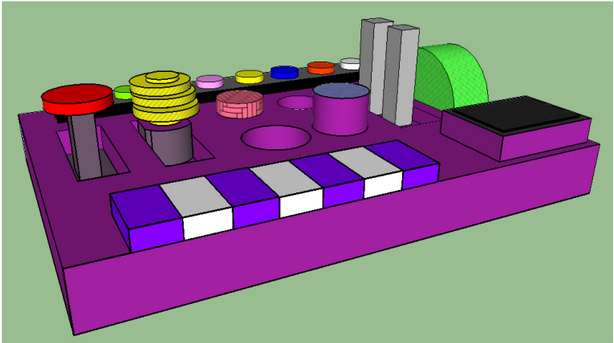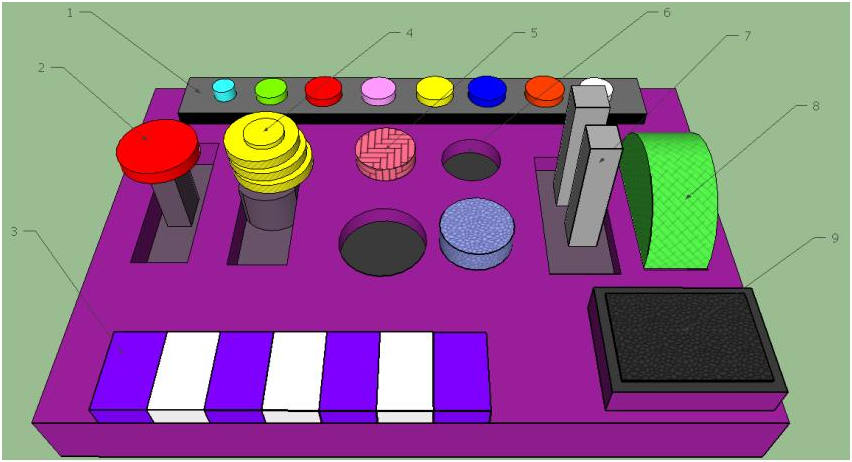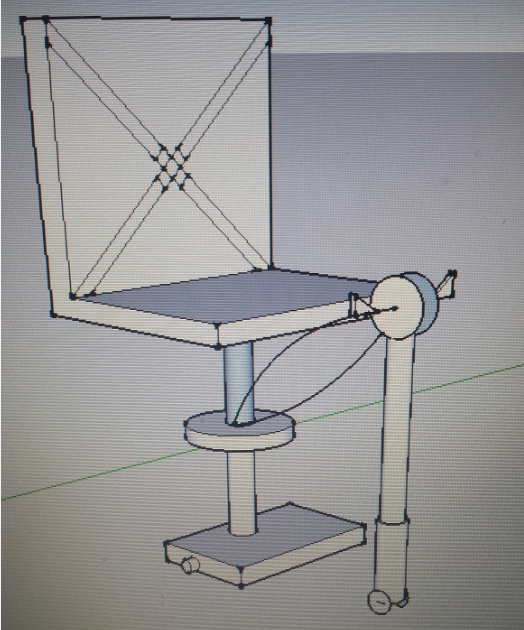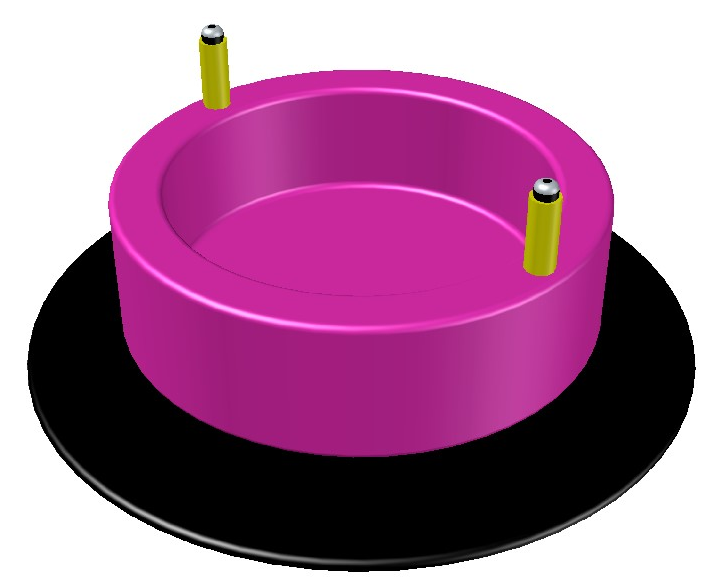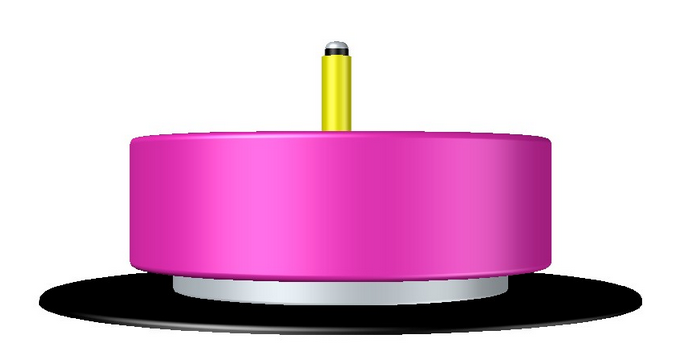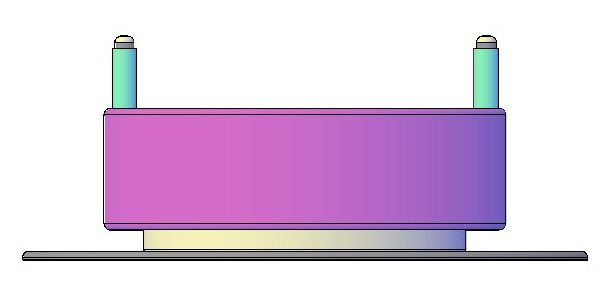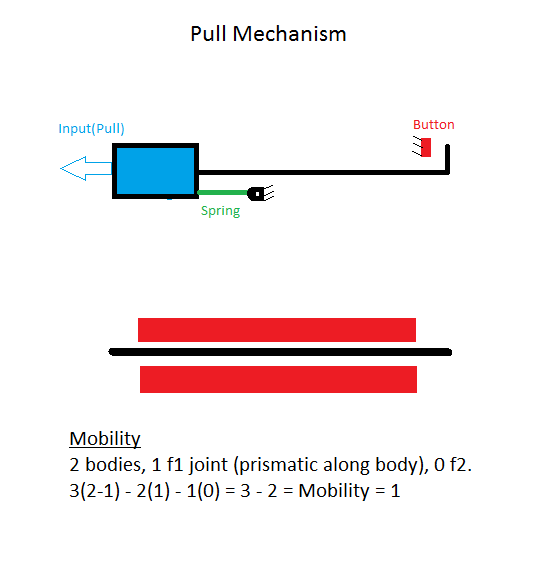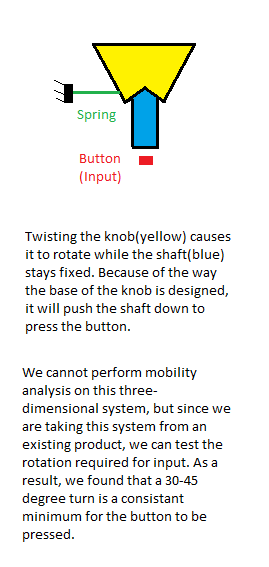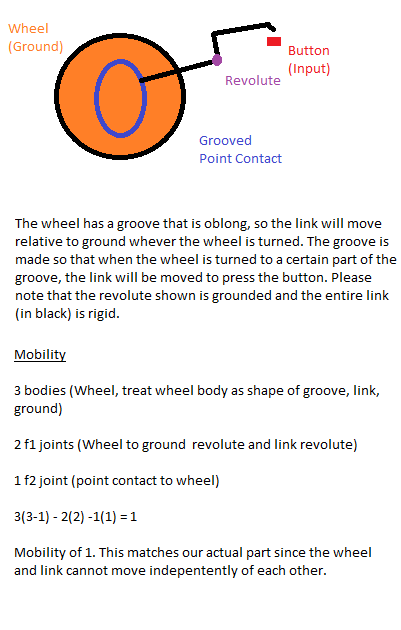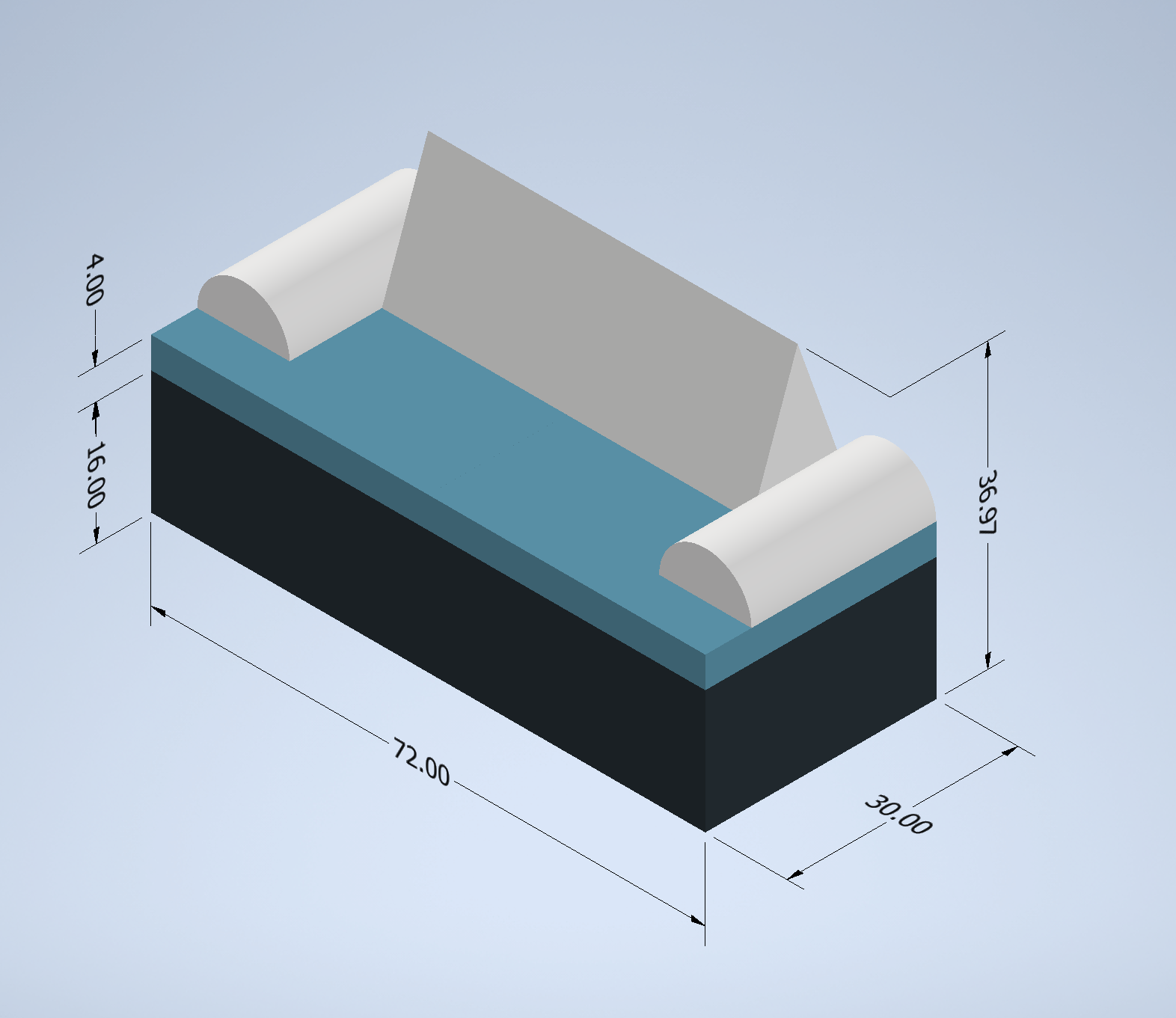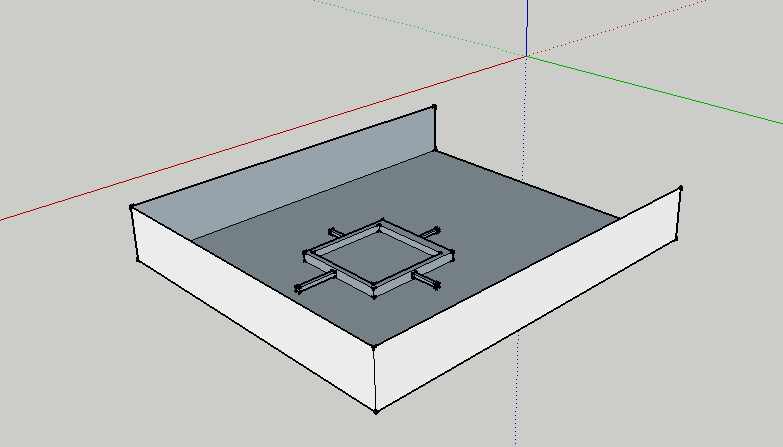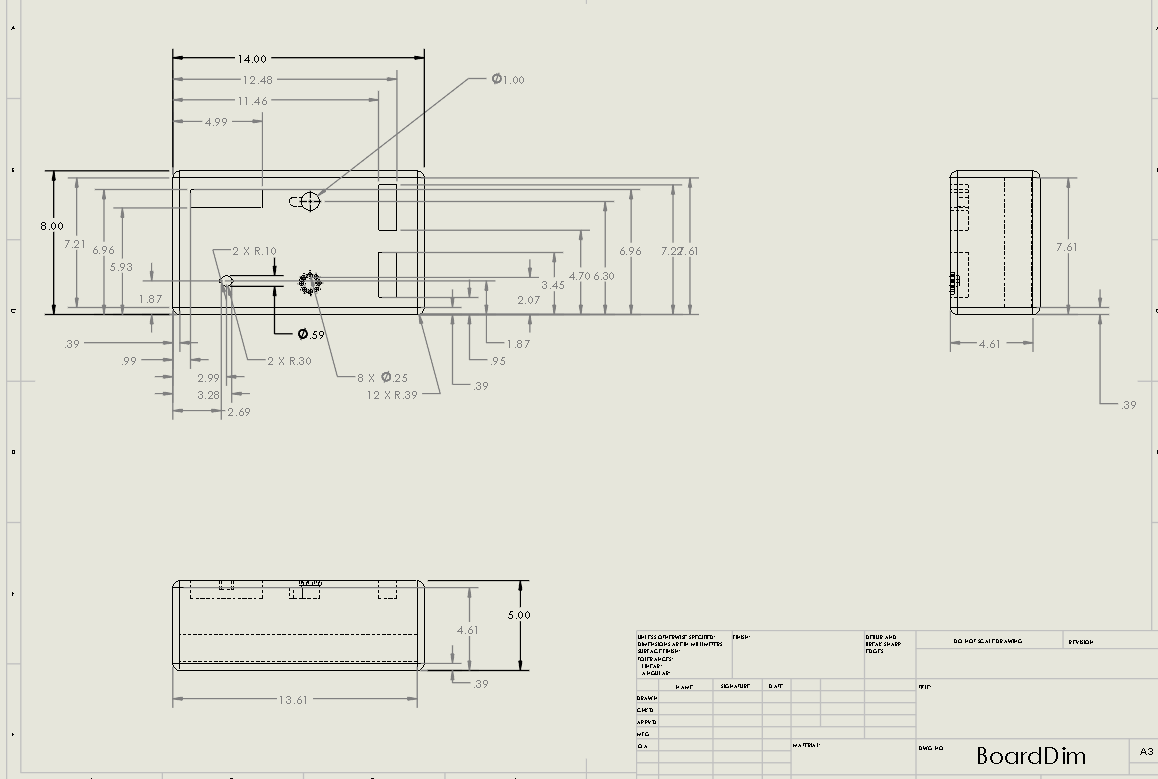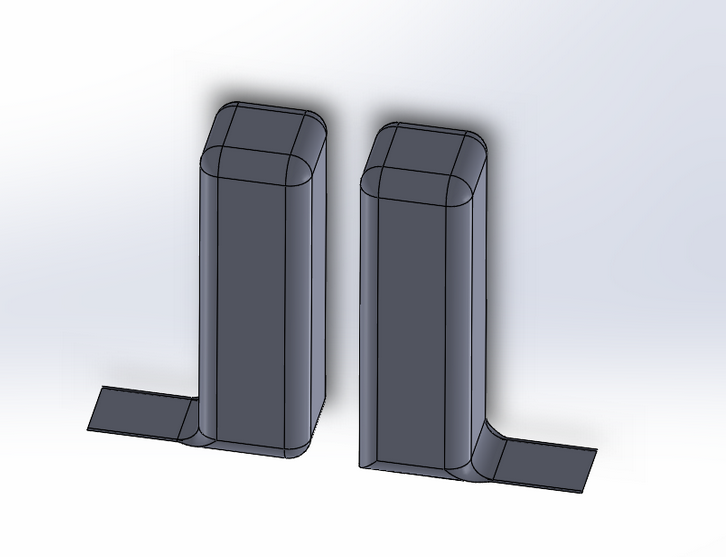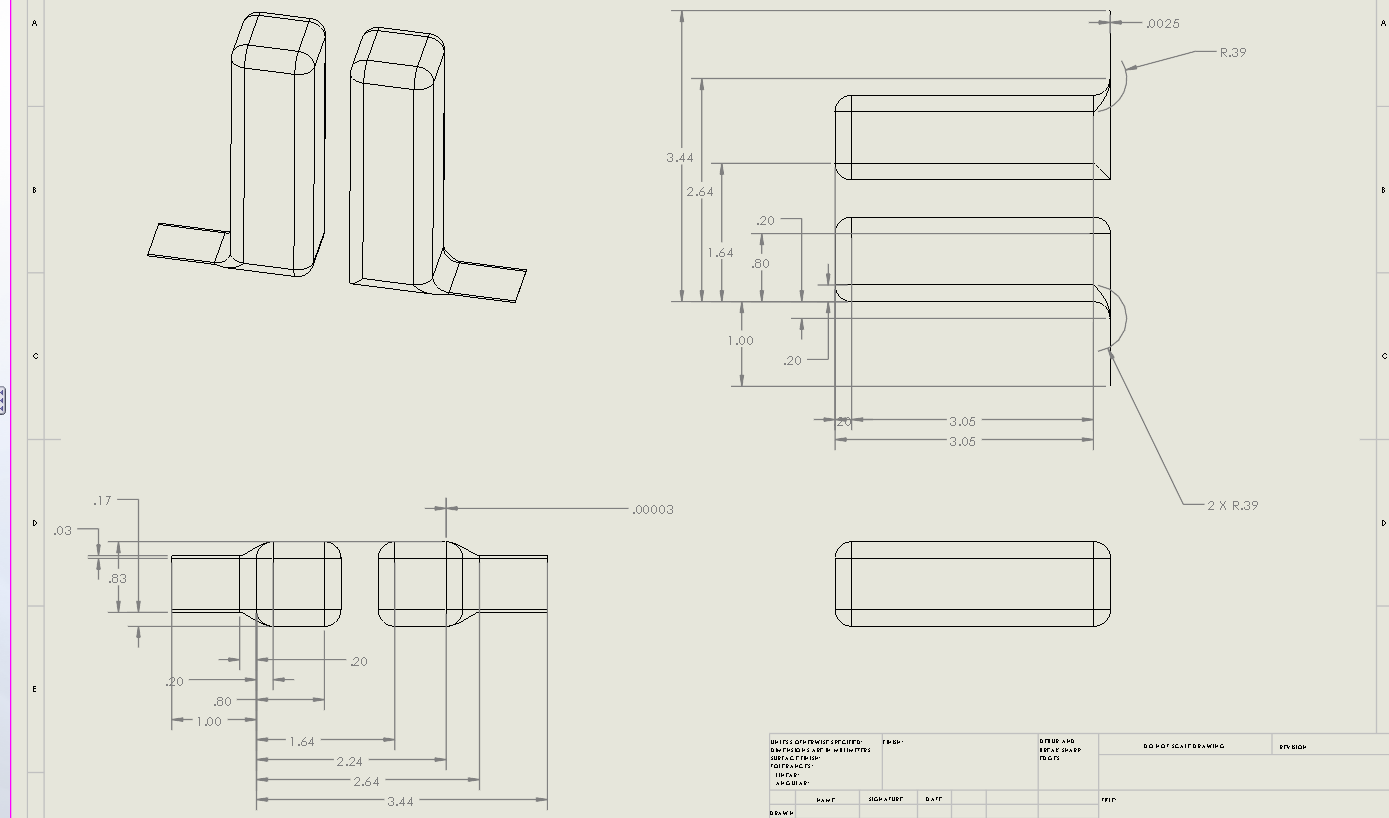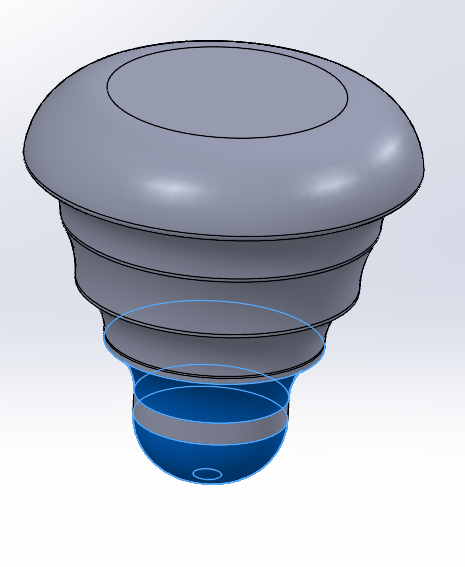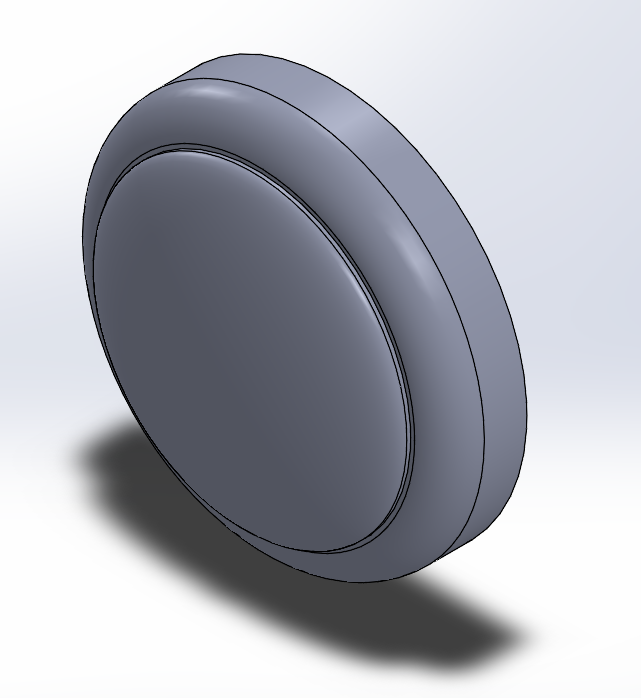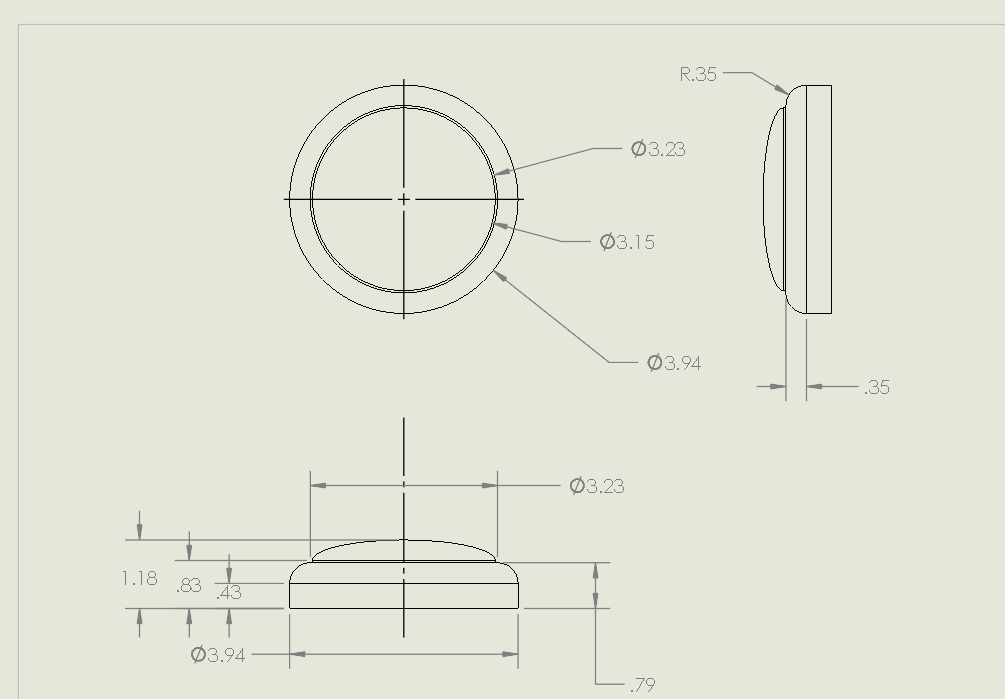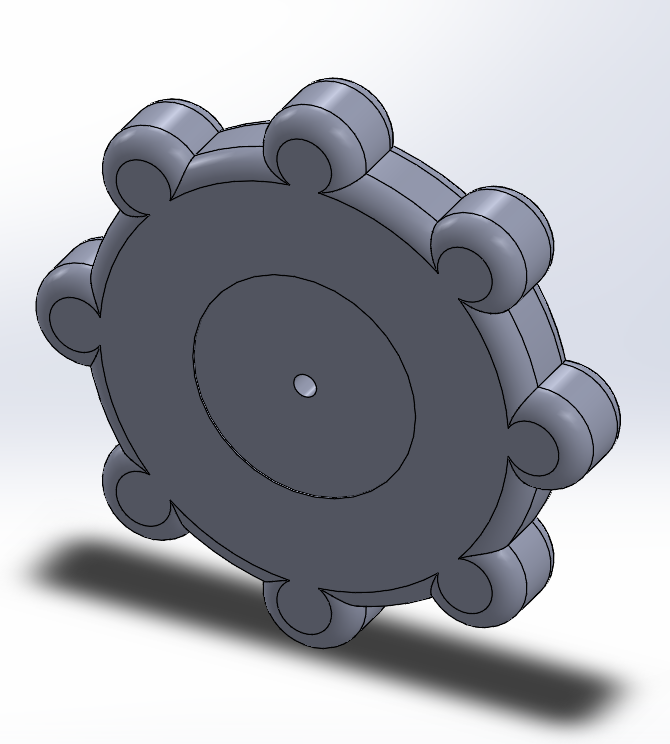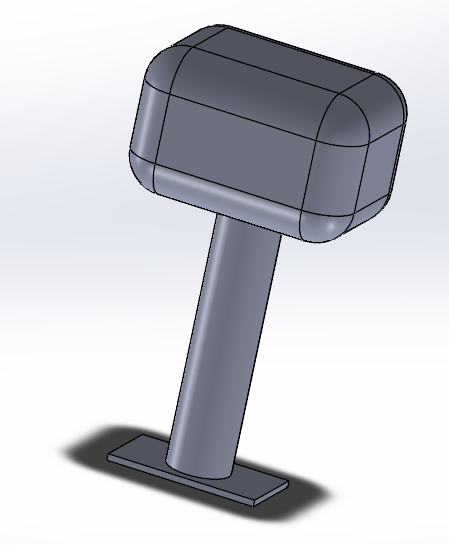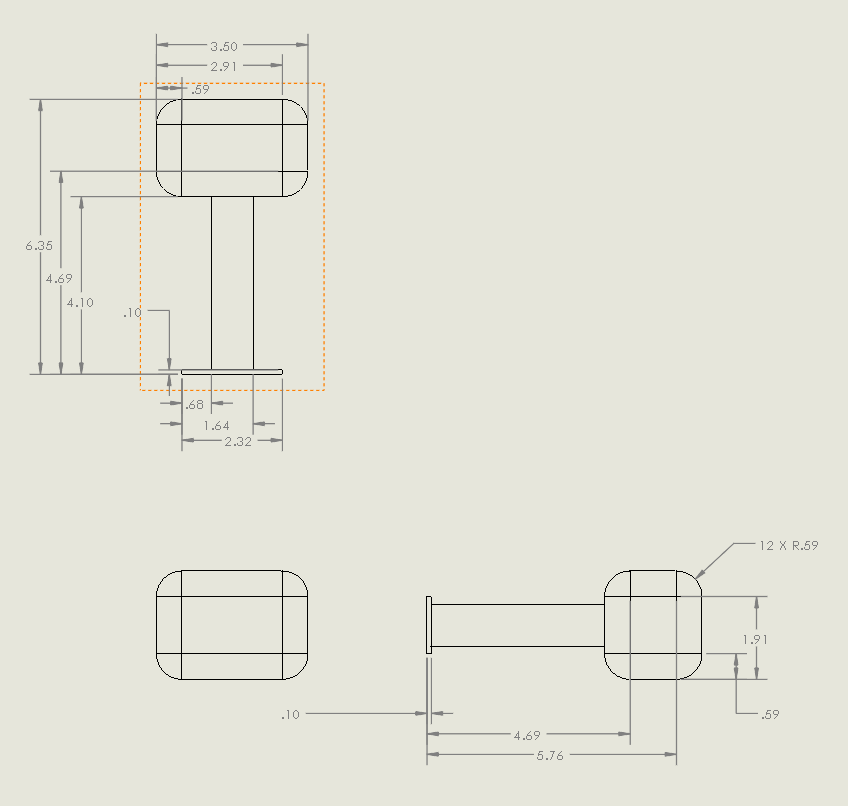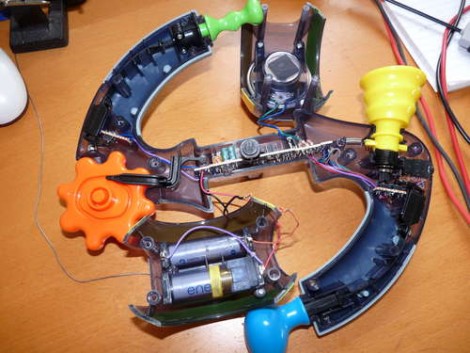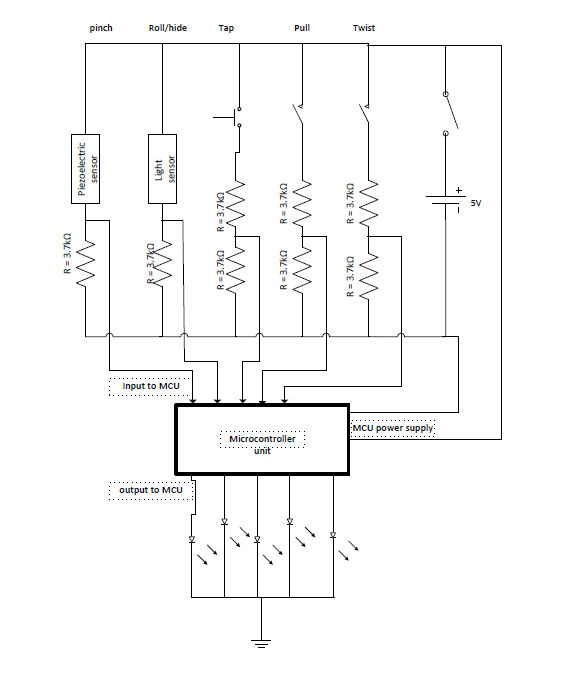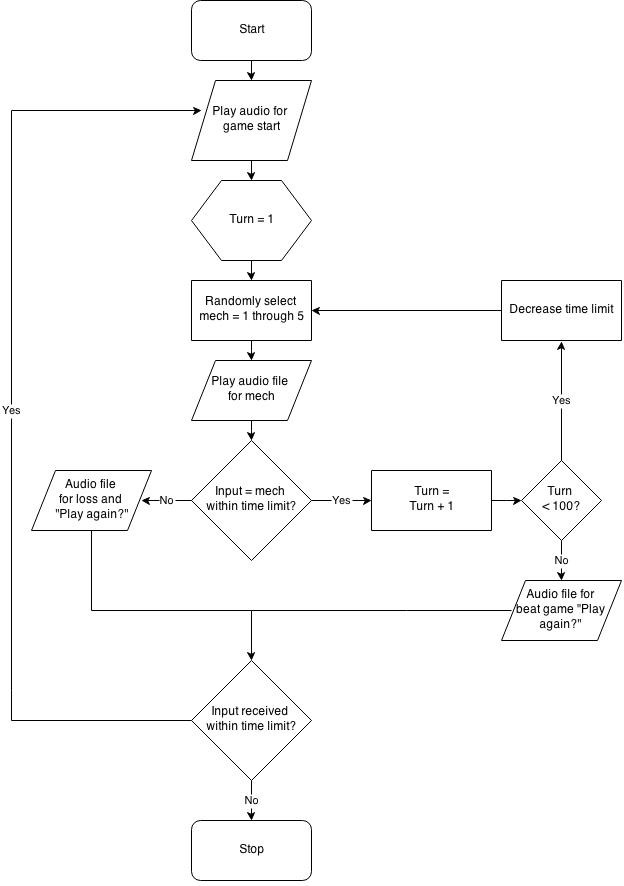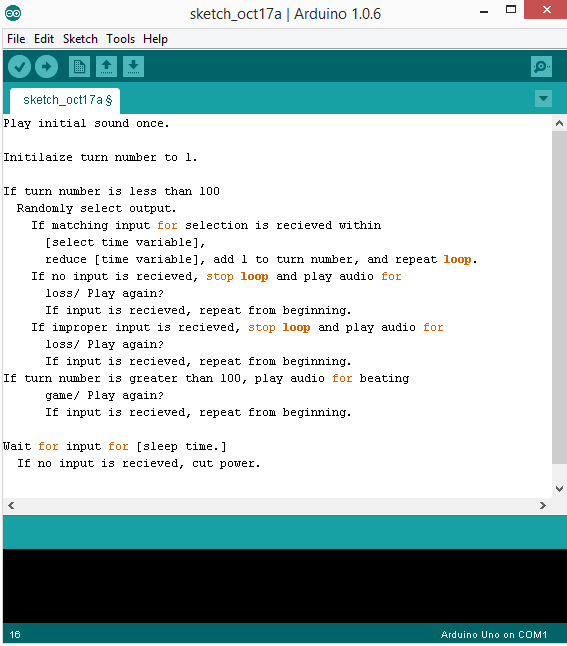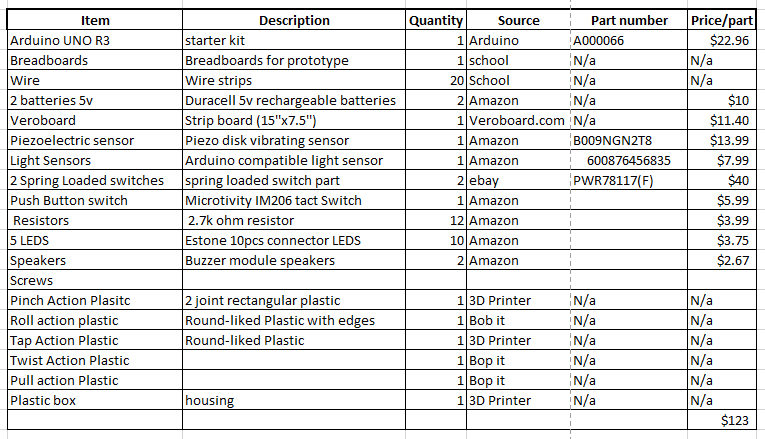Sensory Toy F14
Abstract
An eight year old girl who suffers from near complete blindness needs a toy that she can enjoy while also improving her fine motor skills.
Team members
From left,
- Alex Welcome
- Julia Hoskins
- Jasmine Robinson
- Abdallatif S. Alrashidi
- Ifeanyi Nwosisi
Problem Statement
Our client is an eight year old girl who has been nearly completely blind since birth. We are aiming to make her a toy that she will enjoy playing with, while also improving her fine motor skills. Abby seems to really enjoy strong sensory input, either from what little vision she has or from feeling or hearing. She likes bright lights, vibrations and music. She also enjoys the sensation of spinning, often asking her therapist at school to spin her around in an office chair. We are going to try to incorporate as many of these sensory inputs as we can, so she can have a variety of things to do with her new toy. We also want to make this a toy that she can either use by herself, or with friends.
Design Specifications
First, a list of qualitative metrics:
1) Safety
Safety is our highest priority with this project. We plan to create a product that our client can use without any risk.
2) Fun!
After safety, we need to make sure that we don't lose sight of the main goal of this project, which is to make a toy that our client will enjoy using.
3) Ease of use
The next highest priority is ease of use. We don't want our client to struggle to use the new toy, no matter what design we decide to pursue.
4) Distinct Fine Motor Development
If possible without jeopardizing the top two priorities, we want this toy to be a learning tool. Mostly, we want the new toy to help develop our client's fine motor skills, which can include gripping, pinching, and twisting.
5) Distinct Gross Motor Development
We have also been asked for a device that will improve our client's gross motor skills. These include full arm movement and arm strength.
6) Portability
If it is feasible with the design we choose, we would like this toy to be fully portable. This means it will need to be lightweight, small, and have a built-in or rechargeable battery. If this is not possible, we need to make sure our design can be moved by an adult periodically. If we are going to make this device portable, we also need to make the device as compact as possible. We think 17" X 11" X 3" (about the size of a 17" laptop computer) would be an acceptable limit. It would also need to weigh less than ten pounds if we want our client to be able to carry it.
Other Metrics
In no particular order, here are some other needs we are trying to meet, all of these have lower priority than the first three.
- Not disruptive to others (so our client can use in class)
- Ability to play with toy by alone or with others
- Adjust-ability (To account for any growth our client may have)
Background research
While many different toys are available , most are geared towards children with sight. Many forms of entertainment for kids are now on computers or portable electronics. Cause and effect style toys that involve light and sound are generally geared towards younger children. Sit and spin type toys are available for everyone from toddlers to adults.
Conceptual Design
Design Concept 1
Sensory Board
The activity board would provide a variety of different tasks and motions to practice fine motor skills. Different buttons or activities produce different light or sound patterns for entertainment. Board could be battery powered or plugged in, depending on preference of client. Desirable colors and textures can be selected to suit client.
1. LED strip
2. Toggle switch
3. Keys (similar to braille writer for practice)
4. Rotating switch
5. Raised, textured buttons
6. Sunken button/toggle
7. Pinch switch
8. Knob
9. Speaker
This sensory board would be on either a table or a cart. This way, it can be used while sitting in an office chair. Also, we want to make sure the board is portable, so the cart or table it is on will have wheels for easy movement.
Design Concept 2
Arm Bike Spin Chair
1. Wheel: A small bike wheel with big gear on the wheel using the big gear to make the rotation slower than the input pedaling.
2. Seat: A seat with bigger area than the wheel to prevent her legs from touching the wheel while rotating. The seat has a seat belt for user safety.
3. Bike pedals
4. Small gear in the bike pedals
5. Chain: We have to use a special type of chain since the smaller gear and the larger one in different plane. It will connect the smaller gear with the larger one, so the wheel can rotate along with the chair. The chain will be covered for her safety.
6. Adjusted cylinder with small wheel : This cylinder contain two cylinders a thick cylinder and thin cylinder, so we can adjust the height. The small wheel in the cylinder will rotate with the chair.
7. Cylinder: A cylinder that will connect the seat with the wheel and the wheel with the stander desk.
8. Stander Desk: A stander desk with small wheel right side and the left. the small wheel will be inside the stander desk when she spins. She can move the arm bike spin chair by pulling off the small wheel from the desk.
Design Concept 3
Spin Chair
The idea behind this design is to create something fun, comfortable, portable, safe, easy to operate and therapeutic .
The device components are:
1. A comfortable round cushion- This is where she would sit comfortably, preferably with her legs crossed to make the experience enjoyable
2. Sensory therapeutic handles: This serves as a support while she is spinning. She would hold tight while the device spins, hence building her motor skills while having fun without knowing it. The handles also emits light when turned on.
3. Two buttons: The buttons are like on and off switch which powers the device and turns on the light
4. Ball bearings: The ball bearings enables the device to mechanically spin around without using any form of battery or electricity. The devices could spin when pushed or pulled in any direction easily
5. Stand: The stand serves as a support to the entire device. It should be coated with rubber so it could be safe to carry about or harmless when hit with the foot.
Evaluate concepts/select candidate
We have created a qualitative rating system to analyze our conceptual designs. These ratings, along with input from the client's therapist, have helped us decide which direction to move forward with this project.
We have evaluated each project individually to come up with ratings related to some of our more important goals with this project. We have rated each goal on a scale of 1 to 5. A score of 5 indicates that we believe this concept will completely meet our client's need. From there, goal completion diminishes the further we get from a 5 rating.
With this evaluation system, the sensory board receive the highest rating: 23/30. With input from the therapist, client, and her family, it was decided to move forward with this design. This design is the most portable and provides therapeutic opportunity for the most number of fine motor skills.
Detailed Design
Description of selected design
Table top sensory toy was selected. Design is modified to include game logic and use fewer mechanisms.
Detailed description of selected design
The design of the toy is a logic game where the user must respond to audio cues given by the game by operating the mechanism the game instructs. The game reduces the amount of time the user has to respond with each turn. The input mechanisms selected target the specific fine motor skills requested by the client.
There are five input mechanisms.
"Roll" mechanism is a wheel. The game logic receives correct input when the player rotates the wheel. "Pull" mechanism is a lever. The game logic receives correct input when the lever is moves towards the player in a direction parallel to the surface of play. "Twist" mechanism is link with rotation. The game logic receives correct input when the member is rotated slightly about the axis perpendicular to the surface of play. "Pinch" mechanism is a pair of bars that translate in only one direction. The game logic receives correct input when the links are moved towards each other along the plane parallel to the surface of play. The center mechanism is a button--"tap" mechanism. The game logic receives correct input when the button is depressed.
Analysis
Engineering analysis 1
Engineering analysis 2
Engineering analysis 3
CAD Drawings
Wiring
Game Logic
Flowchart
Pseudo-code
Final code for Arduino will be written in C/C++ using software provided.
Bill of Materials
Assembly Instructions
Fabrication Process
Photos of Completed design
Insert pictures of the final product
Instructions for safe use
Provide a clear summary of safe use for the family. Do not use the device unless supervised by an adult that has been fully understood the safe use of this product.
